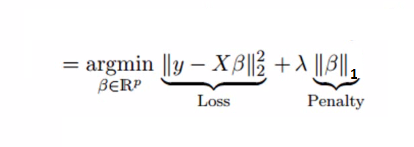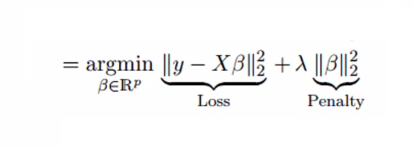项目作者: geekquad
项目描述 :
Basic implementation of Lasso, Ridge Regression and Elastic-Net Regularization.
高级语言: Jupyter Notebook
项目地址: git://github.com/geekquad/Lasso-Ridge-Regression-and-Elastic_Net-Regularization-from-Scratch.git
Lasso-Ridge-Regression-and-Elastic_Net-Regularization-from-Scratch
Feature Selection:
We want to have a minimal number of eatures that it takes to really capture the trends and patterns of our data.
*NOTE:Features != Information
Why do we do Feature Selection?
- It enables the machine learning algorithm to train faster.
- It reduces the complexity of a model and makes it easier to interpret.
- It improves the accuracy of a model if the right subset is chosen.
Regularization:
- This is the method for automatically penalizing extra features.
- It can set the coefficient of a feature to zero.
There are some pre-defined modules/libraries in sklearn that helps us in Reglarization/Feature Selection.
- Lasso Regression
- Ridge Regression
- Elasric-Net Regularization
Lasso Regression:
- In Lasso Regression, we add Mean Absolute Value of coefficients.
- Lasso regression can completely eliminate the variable by reducing its coefficient value to 0.
- The new term we added to Ordinary Least Square(OLS) is called L1 Regularization.

The second term is basically a paramter with the term that describes how many features we are using.
Plotting Lasso Regression’s Coefficient Score:

Documentation of LASSO:
https://scikit-learn.org/stable/modules/generated/sklearn.linear_model.Lasso.html
Ridge Regression:
- In Ridge Regression, we add Mean Square Values of coefficients.
- This term is the sum of squares of coefficient multiplied by the parameter.
- The motive of adding this term is to penalize the variable corresponding to that coefficient not very much correlated to the target variable.

In this equation, we have two components. First one is least square term and other one is lambda of the summation of β2 (beta- square) where β is the coefficient. This is added to least square term in order to shrink the parameter to have a very low variance.
Plotting Ridge Regression’s Coefficient Score:

Documentation of RIDGE:
https://scikit-learn.org/stable/modules/generated/sklearn.linear_model.Ridge.html
Elastic-Net Regularizatoin:
- ElasticNet is hybrid of Lasso and Ridge Regression techniques.
- It is trained with L1 and L2 prior as regularizer.
- Elastic-net is useful when there are multiple features which are correlated. Lasso is likely to pick one of these at random, while elastic-net is likely to pick both.

In elastic Net Regularization we added the both terms of L1 and L2 to get the final loss function.
Plotting Elastic-Net Regularization’s Coefficient Score:

Documentation of ELASTIC-NET:
https://scikit-learn.org/stable/modules/generated/sklearn.linear_model.ElasticNet.html





